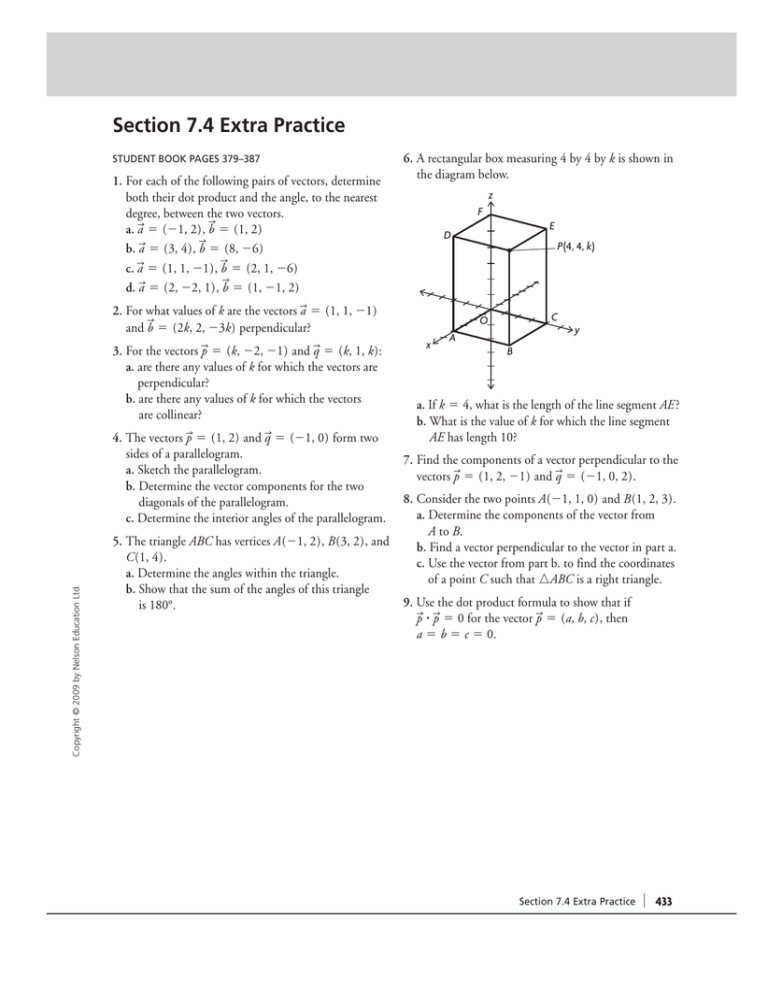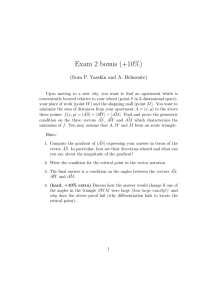6. 1. the diagram below.
advertisement

Section 7.4 Extra Practice STUDENT BOOK PAGES 379–387 Copyright © 2009 by Nelson Education Ltd. 1. For each of the following pairs of vectors, determine both their dot product and the angle, to the nearest degree, between the > two vectors. > a. a ⫽ (⫺1, 2), b ⫽ (1, 2) > > b. a ⫽ (3, 4), b ⫽ (8, ⫺6) > > c. a ⫽ (1, 1, ⫺1), b ⫽ (2, 1, ⫺6) > > d. a ⫽ (2, ⫺2, 1), b ⫽ (1, ⫺1, 2) > 2. For what > values of k are the vectors a ⫽ (1, 1, ⫺1) and b ⫽ (2k, 2, ⫺3k) perpendicular? > > 3. For the vectors p ⫽ (k, ⫺2, ⫺1) and q ⫽ (k, 1, k): a. are there any values of k for which the vectors are perpendicular? b. are there any values of k for which the vectors are collinear? > > 4. The vectors p ⫽ (1, 2) and q ⫽ (⫺1, 0) form two sides of a parallelogram. a. Sketch the parallelogram. b. Determine the vector components for the two diagonals of the parallelogram. c. Determine the interior angles of the parallelogram. 5. The triangle ABC has vertices A(⫺1, 2), B(3, 2), and C(1, 4). a. Determine the angles within the triangle. b. Show that the sum of the angles of this triangle is 180°. 6. A rectangular box measuring 4 by 4 by k is shown in the diagram below. z F E D P(4, 4, k) C O x A y B a. If k ⫽ 4, what is the length of the line segment AE? b. What is the value of k for which the line segment AE has length 10? 7. Find the components of a vector perpendicular to the > > vectors p ⫽ (1, 2, ⫺1) and q ⫽ (⫺1, 0, 2). 8. Consider the two points A(⫺1, 1, 0) and B(1, 2, 3). a. Determine the components of the vector from A to B. b. Find a vector perpendicular to the vector in part a. c. Use the vector from part b. to find the coordinates of a point C such that 䉭ABC is a right triangle. 9. Use the dot product formula to show that if > > > p ⴢ p ⫽ 0 for the vector p ⫽ (a, b, c), then a ⫽ b ⫽ c ⫽ 0. Section 7.4 Extra Practice 433


